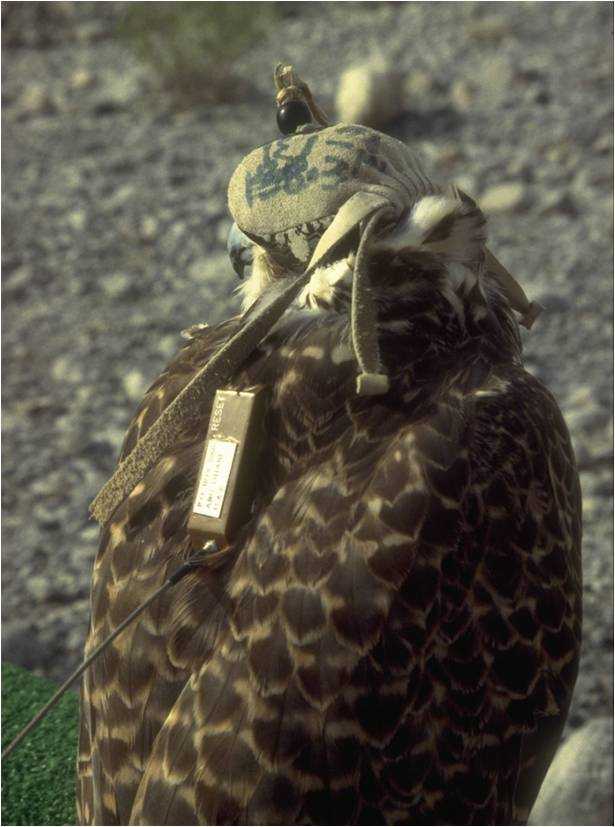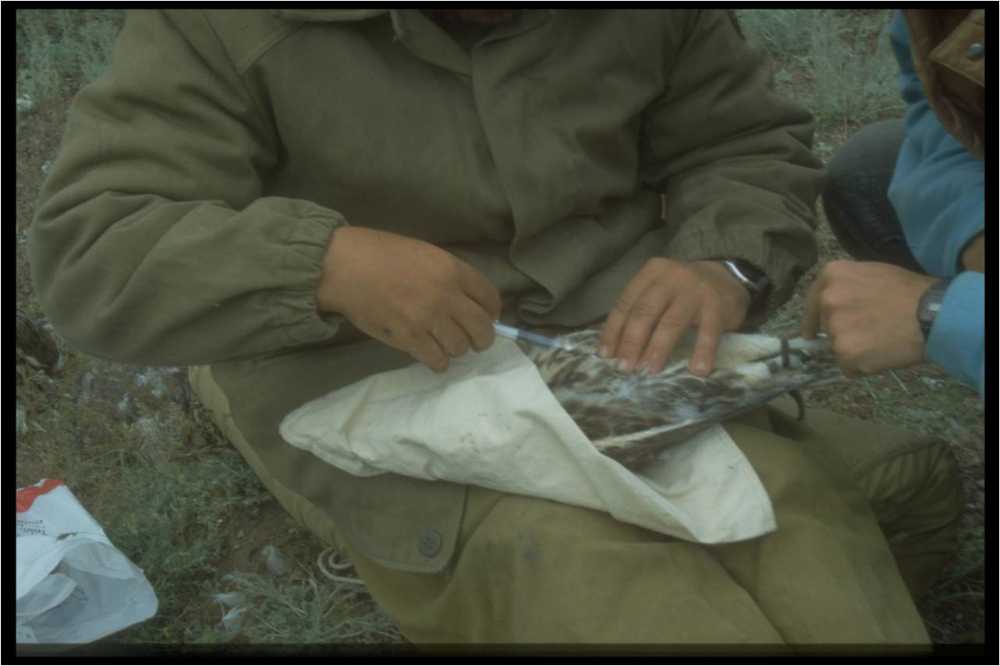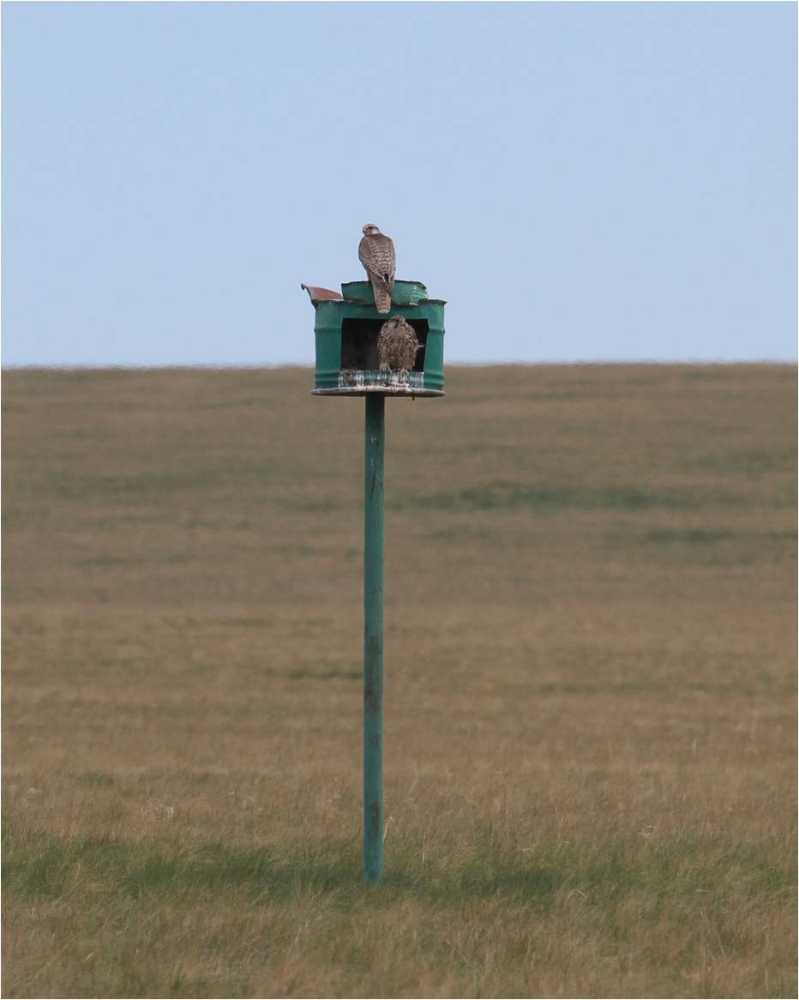Research by Falconers

One of the first Argos radio-tags small enough for a Saker
Falconers have been organising research on wild Sakers for more than 25 years. The earliest studies were run by veterinarians, who kept records of the numbers they were treating and the diseases they found in those fresh from the wild. They developed the implanting of microchips to mark falcons in safe and unobtrusive ways, first for veterinary records and then for use also with leg-rings in the wild. Falconers also developed the techniques for breeding raptors in enclosures, and for releasing them into the wild where natural populations had been lost.
The use of radio transmitters on raptors was also pioneered by falconers, nearly 50 years ago. Transmitters for tracking by satellite were first used by falconers in North America, but on bears before they became small enough for use on eagles. They then organised the research that made these tags small enough for falcons. This was all helped by falconers who organised the first research and conservation organisations specifically for birds of prey.
Today, you can help to find out more about the places that are important for wild Sakers by sponsoring tags to track birds by satellite. This will reveal their movements from breeding areas through their migrations. You can read about this on the Migration page of this site.
Studying by Marking and Trapping

Marking a young Saker with a microchip
Of course, during the last 4000 years falconers also developed most of the techniques for trapping raptors. More than 20 years ago, falconers worked for the United Arab Emirates to mark Sakers at nests in Kazakhstan with both rings and microchips so that they could be recorded by trappers and in falcon hospitals if recaptured. This provided a way to estimate how many young Sakers from Kazakhstan were being harvested for falconry.
In Saudi Arabia, work has started to estimate the health of falcon populations from trapping records. The really exciting vision is to be able to estimate population sizes by a combination of marking and trapping. For example, if 100 falcons are marked and 10 of them later trapped, then we know that the harvest is 10%. However, if we also know that the 10 trapped Sakers with markers were among a total of 200 trapped Sakers, then there were 20 times as many fledged as were marked, making 2,000 falcons fledged.
Building Wild Populations

A Dixon nest box on the Mongolian stepps
As there are many more areas with good prey populations for breeding Sakers than there are areas with good nest sites, exciting work by the Environment Agency-Abu Dhabi was done in Mongolia. It was known that wild Sakers were eager to nest in some areas, because nests had been found on bridges and even on the ground. Nest boxes for Sakers were therefore built from steel drums on poles, spaced 1.5 kilometres apart. Wild Sakers adopted these boxes for breeding, and local people started helping to run the sites.
More than 5,000 nest boxes have already been put in place, and many have been used by Sakers for several years in a row. Currently about 2500 young Sakers are reared in these boxes each year. This shows how to build a population fit to be harvested for falconry. Moreover, this method can be used to encourage Saker breeding in areas where rodents have been a nuisance for farmers. On the Qinghai-Tibetan Plateau, where up to half of the global Saker population lives in winter, authorities have erected several thousand nest boxes and perch sites in grazing pastures. This way of encouraging birds of prey to settle and feed on pests is now used instead of poisoning small mammals in many parts of the plateau.
Where Saker populations have disappeared, it is possible to restore them. In Asia, wild-caught Sakers that have been used for falconry are released annually under the Sheikh Zayed Falcon Release Programme. Captive-bred Saker Falcons have been released in several countries. A programme developed by Environment Agency Abu Dhabi led in 2018 to the first breeding of Sakers in Bulgaria for more than 20 years.